Odd Banknote Info Part One
Odd Banknote Info
Skit Notes

Skit note for ten kisses a spoof of a 1914 Bradbury 10s note. Read text on the note
Scotland
The £20 Bank of Scotland banknotes of 1969 signed Lord Polwarth and J. Letham has a staggered security thread, (dots & dashes) that in Morse code spell the letters B O S (Bank of Scotland). Pick 110A
When buying Scottish banknotes you may be told the banknote is Scottish Unc (uncirculated). In reality it is EF (extremely Fine) with two folds. The explanation is up till the late 1990's all Scottish tills had small wooden drawers. All banknotes were folded in three and placed in the drawer compartments before issue.
Notches
In order to prevent banknotes being printed on the wrong watermarked paper, Portals created a simple solution. As the sheet of paper was moulded, a small notch was formed on the right hand edge, top corner for the £5 note, at a specific point for each denomination. This ensured the banknotes were printed on the correct watermarked paper. The paper was made up to create a pair of notes,thus, the left hand note has a cut /straight right hand edge and three deckled edges, a top, bottom and left. The right hand note has a cut/straight left hand edge and three deckled edges, top, bottom and right - the right hand with the relevant notch for the denomination.
The right hand edges of the notes shown below in order of denomination: £5, £10, £20, £50, £100. The notches appear on the right hand edge only, which is always deckled. £5 note notches are in the form of the top right corner removed. For further reading:- Promises to Pay page 98.
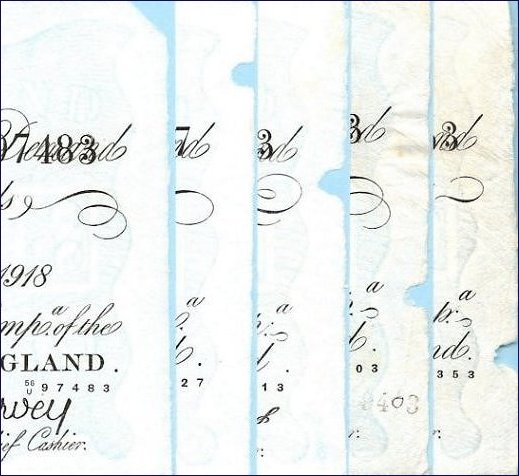
This method also utilised on the £200, £500 and £1000 notes. The £200 notch is between the £20 and £50 notch. The £500 notch is between the £10 and £20 notch. The £1000 notch is between the £5 and £10 notch.
Prisoner of War
Issued by the War Office, Second World War prisoners interned in Britain could earn money paid in the form of notes, with the W^D logo. Values issued include 3d, 6d, 1s, 2s 6d, 5s & 10s. There were over two hundred camps spread all over Britain, each identified by its own number.
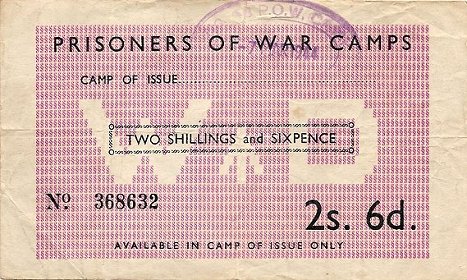
2s 6d War Office note issued to prisoners of war
There were also camps all over the British Empire, many issuing their own notes.
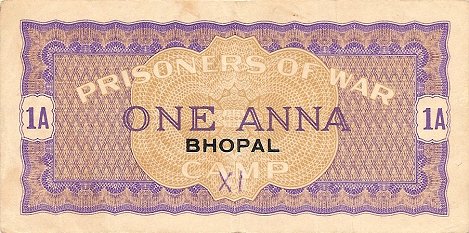
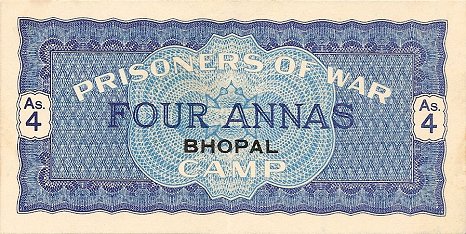
Prisoner of War camp notes from Bhopal India
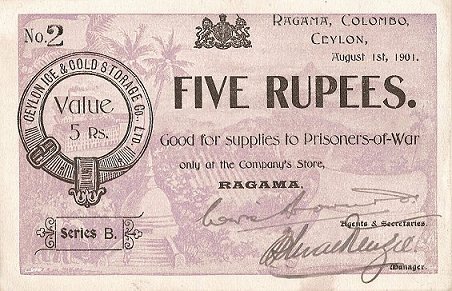
Boer War Prisoner of War camp money from Ragama Ceylon first issue
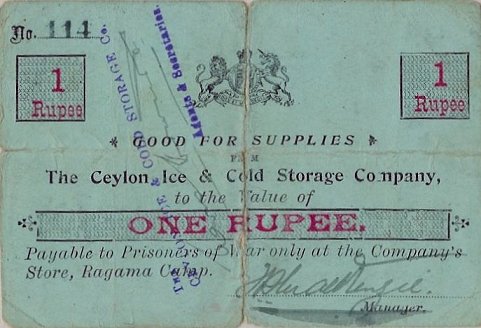
Second issue. The camp was situated in the Ice & Cold Storage Company depot
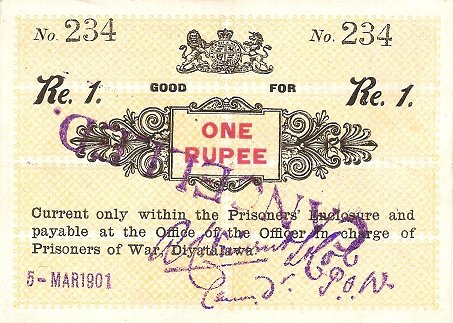
Cancelled remainder from Diyatalawa
Military Money
The War Office printed six issues during the Second World War. Some were never issued, others were overprinted for use in Japan. Two auction lots with many thousands of notes were put on the market by the Ministry of Defence. Two holes were drilled in some of the notes to distinguish them from issued notes.
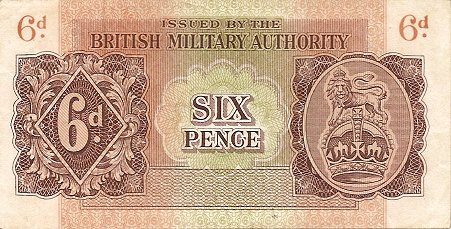
First Issue
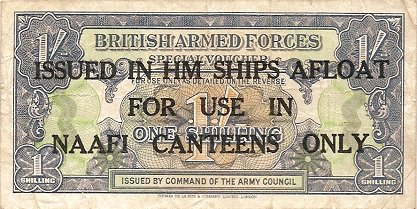
First Issue overprinted for use in Japan
NAAFI = Navy Army Air Force Institute. Provided support for British troops at home and abroad
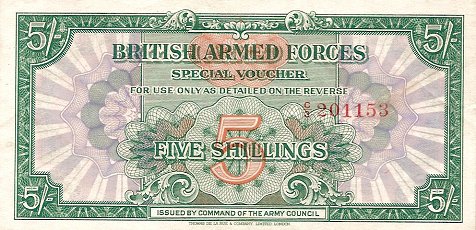
First Issue, series text not featured on the notes
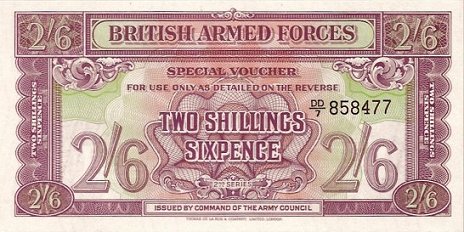
Second Issue series text featured on the notes, under the word SIXPENCE
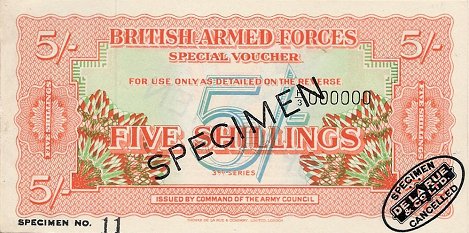
Third issue De la Rue Specimen
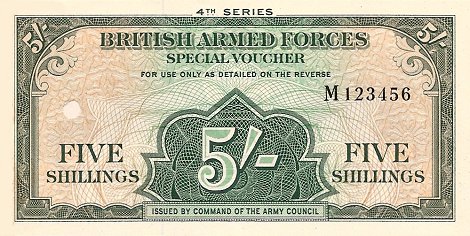
Fourth issue (series) held in reserve not issued to troops
Boar War
The Siege of Mafeking forced the issue of paper money for both sides. Baden-Powell came back a hero but was vilified putting his image on the £1 notes and not that of Queen Victoria.
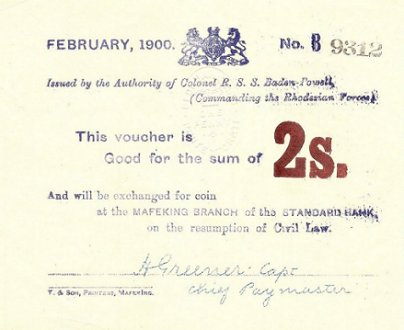
1s, 2s, & 3s notes were issued
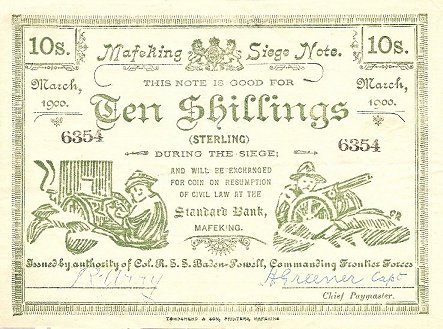
There are two varieties of the 10s note, one has the 'd' missing in Commanding
Rogue Engravers
The most famous rogue engraver worked on the 50 rupees banknote of the Seychelles. After the banknotes were printed it was noticed that when turned sideways the palm leaves spelled the word SEX. But what had remained unseen for many years was the word SCUM on the 10 rupees banknote.

SEX note, look to the right of the Queens head, tilt head to right.
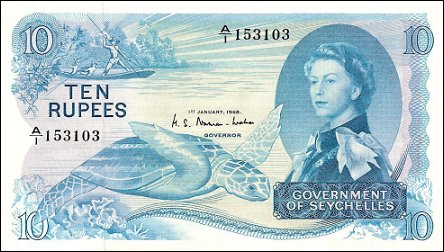
SCUM note, look under the rear flipper of the turtle
Grading Anomalies Seen in Auction Catalogues
EF for age ie Fine - UNC with central crease ie EF
Earlier large Scottish banknotes often have two folds approximately a third in (EF), referred to as Scottish Unc but are in fact EF. All Scottish banks used small draws to store their banknotes. Folding the banknotes to get them in the narrow draws.
Bank of England
The 2s6d & 5s fractional banknotes of 1941 were sent for destruction in the late 1940s. The feared shortage of silver coin had passed. The banknotes were loaded into the pulping vat and the lid clamped shut. At this stage the security men left. The operator supposedly opened the lid and pocketed some banknotes stuck in the lids mechanism. Ten or so banknotes of each value survived for collectors this way or they would have been consigned to the history books only.
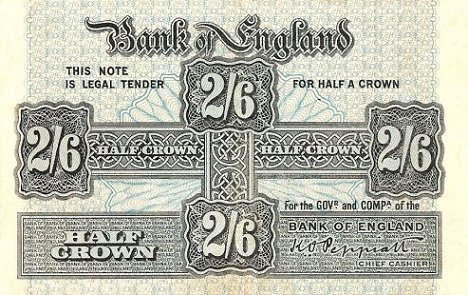
2s6d & 5s Fractional banknotes
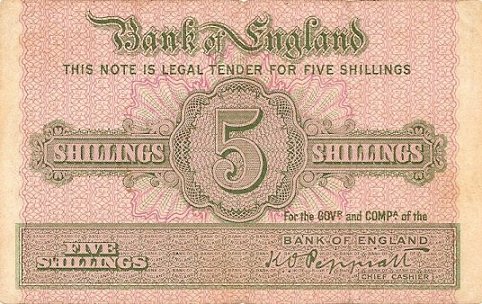
Secret Marks
Most banknotes have incorporated in their design secret marks. This allows the issuing bank to detact forgeries more easily. 'Promises to Pay' page 234 shows the White Note 'Private Marks'. The secret marks may just consist of missing lines in the engine turning.
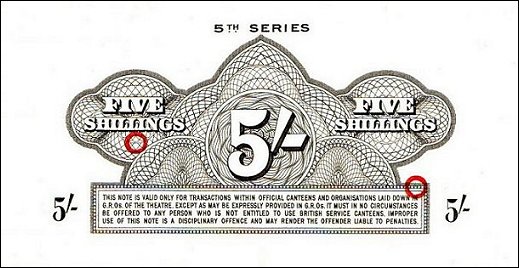
Proof of Fifth issue 5s military note with secret marks encircled.
Plate Marks
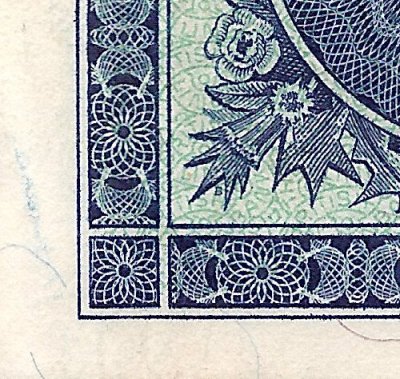
Small 'B' plate mark set in design. Front of Scottish British Linen £5. enlarged
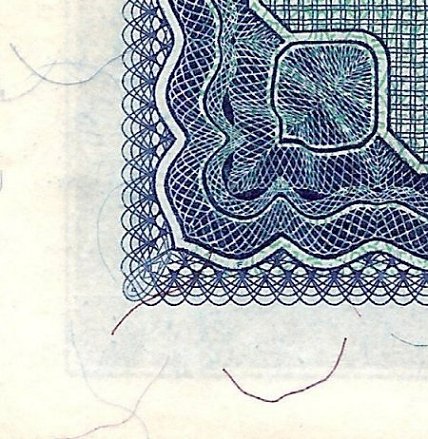
Small 'F' plate mark set in border. Back of Scottish British Linen £5. enlarged
The cotton fibres you see in the paper are added as a security device.
Plate Marks are also found on £1, £10, £20 and £100 British Linen banknotes and many other Scottish banknotes, Irish banknotes and 1940's Isle of Man banknotes. Waterlow & Sons printers was the main implementer of these markings.
Also See Part Two
